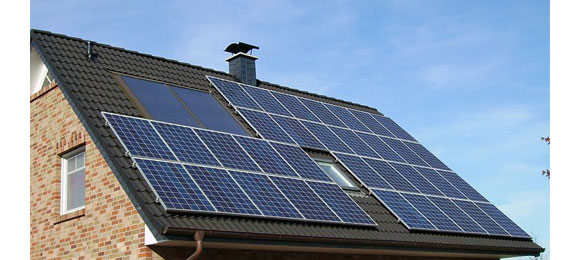How do we Measure Solar Power?
Solar irradiance will differ considerably throughout the year particularly in northern latitudes. For instance, Chicago will have an irradiance of just 1.6 in January, yet it will be 6.1 in June, and the yearly average will be 4.0. This means that solar energy in December is 70% less than in June. Compare this to Phoenix where the irradiance is 7.8 in June and 3.0 in December or 5.5 for the year. If you are not tied to the power grid, this means your capacity has to be more than 2.3 to 3 times the size that would be determined by June numbers. Values for your location are easily available on the web because NASA’s weather satellites have been obtaining this data around the world for many years.
How do we Use Irradiance to Plot the Size of Your System.
If we learn how many kilowatts we require to satisfy the energy needs of our home, we are now in a position to size our system. If we are plotting a grid-tie system, you can use the average yearly irradiance for your computation because the goal is to make your payment to your utility company zero for a full year. If we are plotting a off-grid system, we want to pick the irradiance valuation for December since we want to produce adequate electric power all year.If you divide your needs for the day by the irradiance, you will obtain the amount of watts your system must generate. For instance, if your home in Phoenix calls for 600kw per month, or 20kw per day, your system would need to generate about 3600 watts per hour of total sunlight. You can then divide the system wattage by the output of your solar panels to determine the number of panels required. For this house in Phoenix the system will need 24 solar panels rated at 150 watts.
About the Author
My name is Bruce Clancy and I have been a Do It Yourself enthusiast for over 25 years. I am very conscious of the pitfalls facing homeowners when they get engaged with new tasks requiring new skills. I am a supporter of a Green Planet and am focused on Home Solar Systems.Check out DIYSolarSecrets.com to know more about home solar systems.Alex Campbell, ZAP! Communications, gives us a tour of the ZAP! showroom in Santa Rosa, CA. Part 1 of 3. ZAP has been a leader in advanced transportation technologies since 1994, delivering over 90000 vehicles to consumers in more than 75 countries. At the forefront of fuel-efficient transportation with new technologies including energy efficient gas systems, hydrogen, electric, fuel cell, ethanol, hybrid and other innovative power systems, ZAP is developing a high-performance crossover SUV electric car concept called ZAP-X engineered by Lotus Engineering. The Company recently launched a new portable energy technology that manages power for mobile electronics, like cell phones and laptops.


I can set up my new idea from this post. It gives in depth information. Thanks for this valuable information for all,.. fuck srp
ReplyDelete